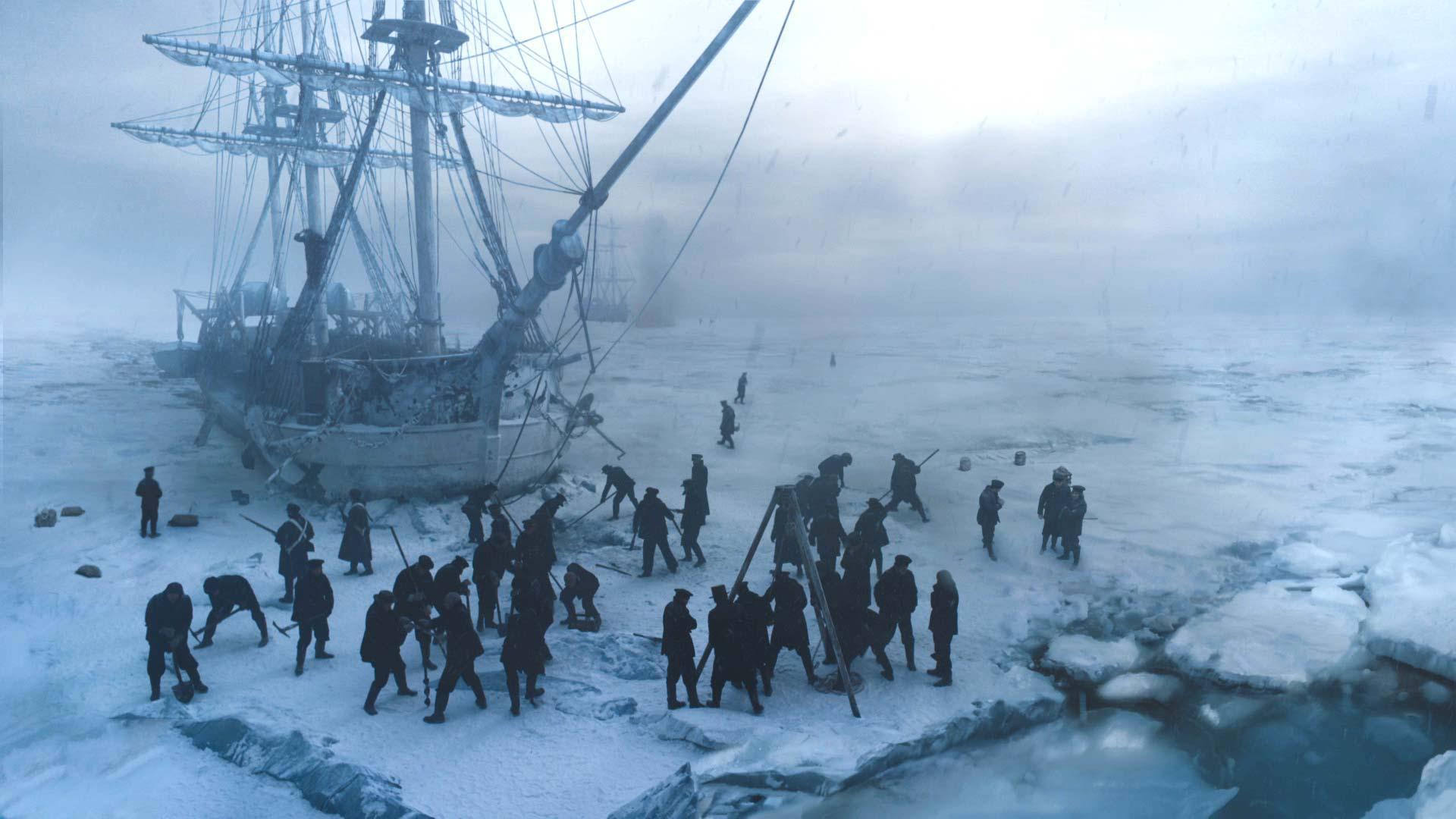The Terror, is a TV show based on Dan Simmons’ novel of the same name. The story is based on the infamous real life tale of the Franklin Expedition that departed from England in 1845 and which, eventually, resulted in the disappearance of the 129 men who went on it. The novel and TV show both feature cannibalism, a monstrous polar bear, and take some artistic license with the original true story. But, just how much of what the book and programme portrays is true?
After setting out to traverse the Northwest Passage in the Canadian Arctic, a naval shortcut that would link up the Atlantic and Pacific Oceans in one fell swoop, the Franklin Expedition saw both ships involved – HMS Terror and HMS Erebrus – get stuck in the polar ice.
In April 1848, after the expedition’s leader Captain Sir John Franklin and almost two dozen men had died, the survivors led by Francis Crozier and James Fitzjames abandoned their ships and set out for the Canadian mainland. They were never seen again.
“Rumours that the… crew resorted to cannibalism have circulated around the doomed expedition since the 19th century”
Following immense pressure from Franklin’s wife, and others, the Admirality – resonsible for the Royal Navy at the time – set off in search of the missing expedition in 1848.
Over the years, and following many searches in the decades afterwards, pieces of the mysterious puzzle started to reveal themselves. Several relics were uncovered, while scientific looks at the bodies recovered have suggested that the men on the expedition went through great suffering.
Hypothermia, starvation, lead poisoning, zinc deficiency as well as scurvy – a disease which results from a prolonged lack of vitamin c – would have killed the crew over time. Exposure to winter temperatures well into minus figures, while wearing inadequate clothing, would have made being stuck in the ice an even more brutal experience for the crew. Frostbite would have been an issue, for sure.
Did the men of the Franklin Expedition resort to cannibalism?
Rumours that the desperate and dying crew resorted to cannibalism have circulated around the doomed expedition since the 19th century, and was (spoiler alert) dramatised in the final episodes of The Terror. In modern times, studies have been able to pinpoint the particularly gruesome and gory reality of the expedition’s latter stages.
Research carried out by archaeologist Simon Mays and anthropologist Owen Beattie, that was published in the Journal of Osteoarchaelogy in 2015, for example revealed the extent of the cannibalism that took place. Looking at bones recovered in the years following the expedition, Mays and Beattie were able to deduce that attempts had been made to extract marrow from the bones in a bid to eke out as much calories and nutrition as possible.
“Attempts had been made to extract marrow from the bones”
Signs of breakage and “pot polishing”, which occurs when the bones are heated in boiling water and which usually occurs in the end stages of cannibalism when starving people are particularly desperate, highlights the horrific situation the surviving men of the Franklin Expedition found themselves in. Knife cuts on the bones had already indicated, in the years before Mays and Beattie published their findings, that flesh had been taken from the dead.
The theory that the starving men on the ice resorted to eating each other first took hold in 1854. While in the Boothia Peninsula an explorer, from the Orkney Islands of Scotland, by the name of John Rae obtained credible information from the Inuit people that suggested the last living members of the Franklin Expedition had turned to cannibalism.
The Inuit families Rae met in Repulse Bay told him how, four winters previously, some other Inuit had met the survivors of HMS Erebus and HMS Terror dragging a smaller boat south. Their leader, thought to be Francis Crozier who was Franklin’s second-in-command, had been able to communicate to them that their ships had been crushed by ice and that they were heading south to hunt food.

Upon returning to that same area, the following spring, the Inuit found around 30 corpses and clear signs of cannibalism. Rae had heard enough and knew that he needed to head home and report what he’d discovered. He took with him relics he’d bought from the Inuit people. The relics were clearly from the Franklin Expedition, and were being traded by the area’s natives. One of the items Rae took back to Britain was a small silver plate with “Sir John Franklin” engraved on the back of it.
Rae’s report that members of the Royal Navy had turned to barbaric acts of cannibalism was met with outrage by the British establishment. After his findings, which he discussed with the Admiralty, were leaked to the press there was a public backlash.
Franklin’s widow Lady Jane was so disgusted by the report she enlisted, among others, notable figures such as Charles Dickens to condemn Rae for suggesting members of her majesty’s Royal Navy would have sunk to the depths of cannibalism. Dickens, the man behind beloved literary classics such as Oliver Twist and A Christmas Carol, even wrote pamphlets that implied it was the Inuit people who were more likely to have killed and mutilated the expedition’s survivors. There is no evidence to support this.






